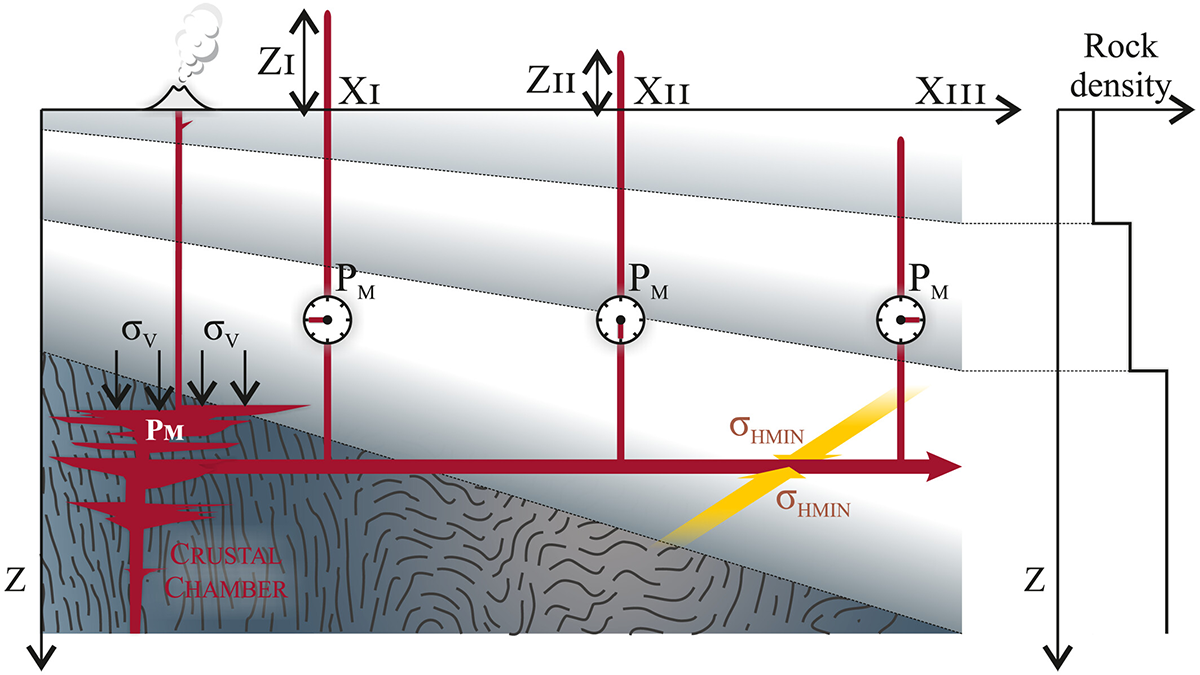Editors’ Highlights are summaries of recent papers by AGU’s journal editors.
Source: Journal of Geophysical Research: Solid Earth
Giant dyke swarms are networks of long, sheet-like cracks in Earth’s crust that carry molten rock (magma) sideways for hundreds of kilometers. In a new study, Foschi and Cartwright [2025] use shallow, laterally injected sills—thin, horizontal sheets of solidified magma—as natural pressure gauges to reconstruct magma pressure along a 660 kilometers dyke from the Mull volcanic center.
The authors run large Monte Carlo simulations (many randomized model runs) to account for uncertainty and find that magma pressure remained high enough that eruption at the surface should have been possible in many places. Despite that, the dykes did not erupt, and the paper shows the classic ideas of neutral buoyancy (where magma stops rising because it becomes the same density as the surrounding rock) or simple mechanical blockage do not explain this. Instead, field evidence and the pressure reconstructions point to near‑surface cooling by groundwater: when hot magma meets cold water or wet sediment it cools, becomes more viscous (thicker), and stalls before reaching the surface.
This finding matters because it changes how we think about long‑range magma transport and eruption risk: strong subsurface cooling can prevent eruptions even when subsurface pressures are high. The sill‑piezometer approach also offers a practical method for constraining magma pressure in other volcanic systems, improving models of where and how magma moves underground.
Citation: Foschi, M., & Cartwright, J. A. (2025). Constraints on magma pressure distribution during long range lateral propagation of giant radial dyke swarms. Journal of Geophysical Research: Solid Earth, 130, e2025JB031995. https://doi.org/10.1029/2025JB031995
—Nikolai Bagdassarov, Associate Editor, JGR: Solid Earth

